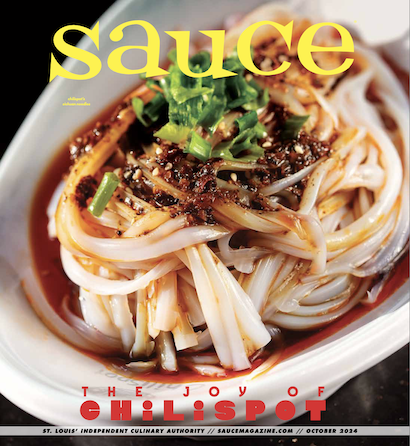St. Louis Club in Clayton is a local landmark
In the mid-1960s, downtown Clayton was already on a path to establishing itself as a business hub, but it was still a city in transition. “There wasn’t a whole lot out here at the time,” said Mike Brady, the current manager of the St. Louis Club. When a group of local businessmen founded the St. Louis Club in 1964, they set up shop in one of the first high-rise constructions in Clayton. It had only been seven years since the city government had abolished a regulation placing a height limit on newly constructed buildings.
Brady said the club started out primarily as a business networking group. “They were looking for a place where they could go, have privacy and conduct business,” he said. The conversations and connections the club has fostered have typically been facilitated over food and drink. That singular focus is a contrast with the region’s country clubs, and it’s a point of pride for Brady. “We don’t have golf, we don’t have tennis, we don’t have swimming pools – we really are just straight-up food and beverage,” he said.
When the club began planning for a move away from its longtime home at the Pierre Laclede Center to a state-of-the-art, more than 40,000 square-foot space at the nearby Centene Plaza C, it made sense to put food and drink at the heart of the new facility. With the help of New York City-based architecture firm Bentel & Bentel, that’s very literally what they did, placing the enormous, 8,000-square-foot kitchen at the center of the club. “The whole thing is like a racetrack that runs around the kitchen,” Brady said.
Run by executive chef Mathieu Lefebvre, the “Lamborghini of kitchens” (as Brady calls it) serves not only the club’s casual dining room and its fine dining restaurant, with convenient access points for each, but also provides catering services for the club’s private meeting rooms. As well as the main cooking lines – one for casual dining, one for fine dining – the kitchen includes a pastry station, a butchery, and a chef’s table-style dining room with large windows offering diners a panoramic view of the kitchen at work.
Although access to the club is membership-based, the broader St. Louis community has also enjoyed the work of many chefs who have passed through the St. Louis Club’s kitchens at some point in their careers. Some notable recent examples include Andrew Cisneros, chef-owner of Jalea and Brasas (and a Sauce Ones to Watch honoree in 2021) and Christopher Delgado, owner of The Wood Shack before its closure in Soulard earlier this year. Brady said the club’s J-1 visa program also helps to bring talented young chefs to St. Louis, many of whom come with experience in Michelin-star restaurants in Europe.
The club’s new location was intentionally designed to smooth out the logistics of catering multiple events in tandem with regular dinner service. Whereas the new club is entirely located on a single floor, the old club’s multi-floor layout meant event management required the precision of an Ocean’s Eleven-style heist, with servers shuttling back-and-forth in elevators and managers coordinating by walkie-talkie. “It was all over the place,” Brady said. Now, the club’s private rooms can simultaneously host several events ranging from small meetings of less than ten people to weddings for as many as 260.
While the club’s management and staff welcomed the streamlined logistics and infrastructural upgrades afforded by the move to the new digs, they also had to get the aesthetic right. In this regard, Brady said they had to balance a fresh, modern feel with what he called a “tip of the hat” to the club’s history. “We brought certain pieces and elements with us from across the street,” he said, pointing out furniture, sculptures, vases and other decorative pieces that were on display at the club’s original location. St. Louis-born Carol Bentel, one of the partners at Bentel & Bentel, played a leading role in shaping the look and feel of the new space, consciously incorporating art by local artists like Bryan Haynes into the interior design, with many works depicting locations around St. Louis.
Other “artifacts” that were uncovered during the move were surplus to requirements. “We were getting into spaces we hadn’t been in a long time, and we were finding probably original beer cans from the construction crews that were from the 1960s – probably collector’s items,” Brady said. “They were just sitting there pristine behind the wall in the substructure.”
The sommeliers at the St. Louis Club like to stash bottles of wine away for the future, though that’s part of the club’s expansive wine program. Brady said the club’s wine offerings, including a wine list as thick as an old-school phone book, as well as access to hard-to-find wines and rare allocated wines, are a big selling point for some members. The club invests early in wines that can be aged in-house, then broken out years later and sold to members at competitive prices. “What’s cool is people will come in from different parts of the country and they’ll look at the wine list and be like, ‘Do you really have this? Do you know that you’re not charging enough for that?’” he said. “It’s all relative.”
As the club approaches its 60th anniversary celebrations toward the end of this year, Brady is happy to take a moment to reflect on the past – but he also has his sights set firmly on the future. “We designed knowing that this was going to be home for the next 60 years,” he said.
7676 Forsyth Blvd., Clayton, 314.726.1964, stlclub.com






